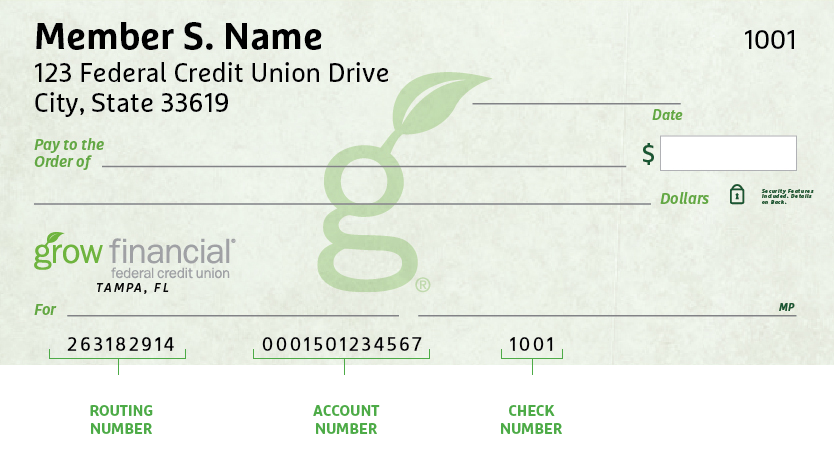- Personal
- Membership
- Membership
- Rates & Fees
- Checking
- Checking
- Personal Loans
- Personal Loans
- Wealth Management
- Investment Services
- Financial Advisors
- Resource Center
- Business

July 11, 2023
Fun Financial Literacy Education for Kids and Teens
Financial literacy education is more important than ever. Fewer than half of U.S. states require students to take a course on personal finance, and one in six children do not reach the baseline level of proficiency in financial literacy.*
The good news? You don’t have to be a financial expert yourself to teach kids about financial literacy. Kids of all ages can start learning about personal finance through fun activities, games and conversations, and we’ve got several ideas for you to begin introducing these important topics.
Financial literacy education for kids
We all know that kids are curious about the world around them and eager to learn. Asking kids questions that get them thinking is a great way to teach financial literacy topics. You can have conversations about things like: What is money? Where does it come from? Why should you save money? What is a budget, and why do you think we have one for our family?
These conversations can help kids form a basic framework for understanding money. Now let’s make it fun! Here are some ideas to try at home:
Kid-friendly financial activities
- Shopping 101: Involve your child in the creation of the family shopping list. Talk through prioritizing items and discuss needs versus wants. Then, challenge your child to create a shopping list within a specific budget using the online weekly ad from your favorite store. (For younger kids, even something as simple as giving them $5 to pick a box of cereal or fruit for the week can help teach them about money by involving them in the process of shopping.)
- Examine commercials and ads: Talk to your child about the commercials during a TV program. Ask: What do you like about that commercial? How is it influencing you to buy something? This is a great way to introduce the concept of advertising and discuss how businesses promote their products or services.
- Teach healthy saving habits: Open a savings account for your child to teach the importance of saving. Then, create a summer to-do list with projects they can do around the house to earn money that they can deposit into the savings account. (Grow has a special youth savings club designed for kids 10 and under called The Bugg Club. Learn more.)
- Focus on financial goals: Does your child want a new video game or gadget? Instead of giving a flat “Yes” or “No,” develop a financial plan together. Discuss your child’s earnings (through gifts, jobs and/or allowance) and create a plan for how to save and reach the goal.
Financial literacy education for teenagers
Your teenager may be ready to tackle financial topics at a more advanced level. They’ll be embarking on the next stage of life soon, which will involve managing their own finances, understanding taxes, navigating pathways to a career and much more. Set teenagers up for success with a solid foundational understanding of personal finance and opportunities to become more independent and confident. You can encourage them to learn about the importance of responsible credit use, what makes up a credit score, how much everyday items cost and how to budget for them, and much more that will have practical application in adulthood.
Activities for teens
- Involve them in household financial activity: Involve your teen in routine financial activities, like creating the monthly budget, paying bills online, depositing or withdrawing money from the bank, or the process of deciding how to pay for an item at a store (credit, debit or cash).
- Assign a budgeting project: Challenge your teenager with creating a functional family budget with a realistic set of numbers and criteria based on your recurring household expenses. Use the opportunity to teach them about tracking income versus expenses and planning ahead for major purchases. (Need help getting started with budgeting? Start here.)
- Encourage a part-time job: Ask your teen what they are interested in and brainstorm together about possible jobs they can do to earn some extra money. Nothing teaches the value of a dollar better than earning it oneself. Some ideas include lawn care around the neighborhood, helping with summer camps and babysitting, and for older teens, part-time work can often be found at local grocery stores, restaurants, auto detailers and coffee shops.
- Review the Paying for College website: Created by the Consumer Financial Protection Bureau, this resource provides help making smart decisions for college by comparing financial aid offers and understanding how to repay student loans. You can also take the opportunity to start talking about career options and the variety of pathways to careers, including traditional four-year degrees, community college, trade school, apprenticeships, internships and more.
It’s never too early to start your child’s financial literacy education, and it’s never too late to expand your own knowledge too! We’re sharing more tips and advice to promote financial literacy education year-round. Keep up with our latest content by following us on Facebook or Instagram.
*Source: Council for Economic Education. https://www.councilforeconed.org/
Posted In:
How to Find Your Routing & Account Numbers
When you make a payment online, by phone or on a mobile device, you may be asked for our routing number and your checking account number. Credit unions and banks use these numbers to identify accounts and make sure money gets where it’s supposed to be. You’ll also need to provide your routing and checking account numbers for:
- Direct deposits
- Electronic checks
- Military allotments
- Wire transfers
Where to Find Your Routing & Checking Account Numbers
Your personal checks include both our routing number and your account number, as shown on the Grow check example below.

Don’t have a Grow check? No worries.
Visit any Grow store and ask for a Direct Deposit Form. It lists both your routing number and checking account number.
Making a Loan Payment
When it comes to making payments, we try to make it as painless as possible to pay your loan every month. We have several different ways to pay, including convenient online options.
Pay Online
You have two ways to pay online by transferring funds from another bank or credit union.
- Grow Online Banking (Preferred payment method for any loan)
This is the simplest way to pay your loan. You can make one-time payments or set up automatic recurring payments in Grow Online Banking. Once you log in, select “Transfer/Payments” from the menu. If you’re not enrolled in Grow Online Banking yet, you can set up your account in just a few minutes.
Log In
- Debit Card or ACH (Available for auto, personal loans and HELOCs)
Note: ACH and debit card payments are not available for credit cards or most mortgages, except HELOCs.
We accept ACH payments with no additional fees or Mastercard® and Visa® debit cards with a convenience fee of $4.95. To get started with an online ACH or debit card payment, select Pay Now below.
Pay Now
Pay by Mail
You can also pay any Grow loan by check through the mail. Please remember to include your account number and Grow loan number on the check. (For credit card payments, please do not write your 16-digit credit card number on the check, which can cause a delay in processing the payment.)
Address for auto, credit card, personal loan and HELOC payments:
Grow Financial Federal Credit Union
P.O. Box 75466
Chicago, IL 60675-5466Address for personal first or second mortgages and home equity payments:
Grow Financial Federal Credit Union
P.O. Box 11733
Newark, NJ 07101-4733You Are About To Leave GrowFinancial.org
At certain places on this site, there are links to other websites. Grow Financial Federal Credit Union does not endorse, approve, represent, certify or control those external sites. The credit union does not guarantee the accuracy, completeness, efficacy, timeliness or accurate sequencing of the information contained on them. You will not be represented by Grow Financial Federal Credit Union if you enter into a transaction. Privacy and security policies may differ from those practiced by the credit union. Click CONTINUE if you wish to proceed.
